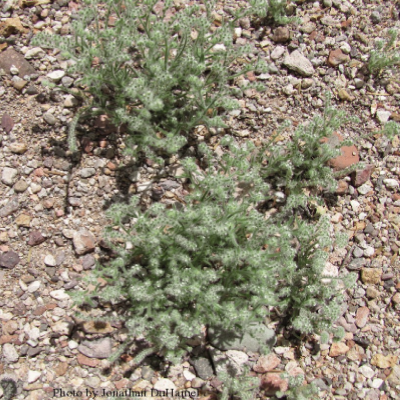
 They were inconspicuous at first, but soon they formed a fuzzy blanket. Popcorn flowers (Cryptantha) invaded my yard and those of my neighbors to form a prickly, grayish-green groundcover. There are at least 35 species of popcorn flowers in Arizona and I think the one in my yard is the Narrow-leaf popcorn flower (Cryptantha augustifolia). But if any botanists have a different opinion from looking at the photos, please write a comment.
They were inconspicuous at first, but soon they formed a fuzzy blanket. Popcorn flowers (Cryptantha) invaded my yard and those of my neighbors to form a prickly, grayish-green groundcover. There are at least 35 species of popcorn flowers in Arizona and I think the one in my yard is the Narrow-leaf popcorn flower (Cryptantha augustifolia). But if any botanists have a different opinion from looking at the photos, please write a comment.
Popcorn flowers are native to the southwestern US and northern Mexico.
These plants are small (2″ to 10″ high) grayish-green, fuzzy, with tiny (1/8″) white, five-petaled flowers. The flowers are followed by tiny nutlets. The leaves are narrow, grayish, hairy, and up to 1.5″ long. The plants are in the Forget-me-not or Borage family.
These unpleasant plants bloom from February through June. I had not noticed them in my yard before, but last year and this year there are hundreds. Apparently the plants germinate in the Fall, then bloom in February and March. Seeds can lie dormant for many years, just waiting…waiting for the right conditions. Then they explode.
You can see more photos, from Desert USA, here. See more photos and range maps here. The second linked source calls these “lovely plants with an abundance of tiny flowers, hairy leaves very evident in early spring, and persisting dried flower stalks.” Just don’t touch them. I found that they are very irritating to the skin.
They can be a nuisance as they are somewhat resistant to Roundup. But I found that spraying them with a mixture of white vinegar, salt, and a few drops of dish soap does a better job at keeping the plants at bay.
For articles on other desert plants, see:
Agaves provide food, fiber and adult beverages
Cactus water will make you sick
Chiltepin peppers, spice and medicine
Joshua Trees of the Mohave Desert
Mesquite trees provide food, fuel, medicine, and more
Oak trees of the Sonoran Desert region
Ocotillo – an aide to hummingbirds and geologists
Palo Verde trees about to turn the desert golden
Saguaro Cactus Icon of the Sonoran Desert
Spectacular flowers of the red Torch Cactus

